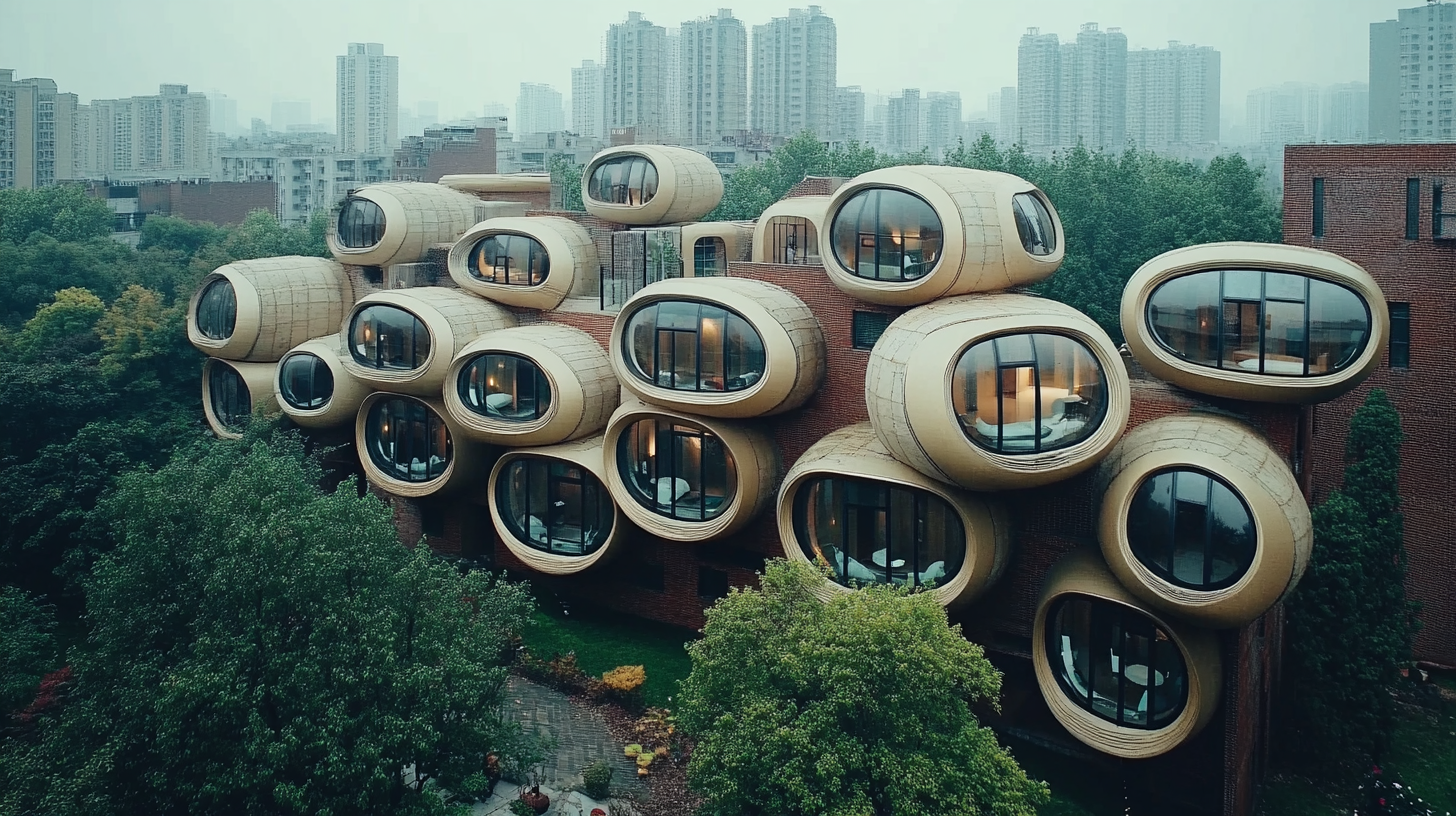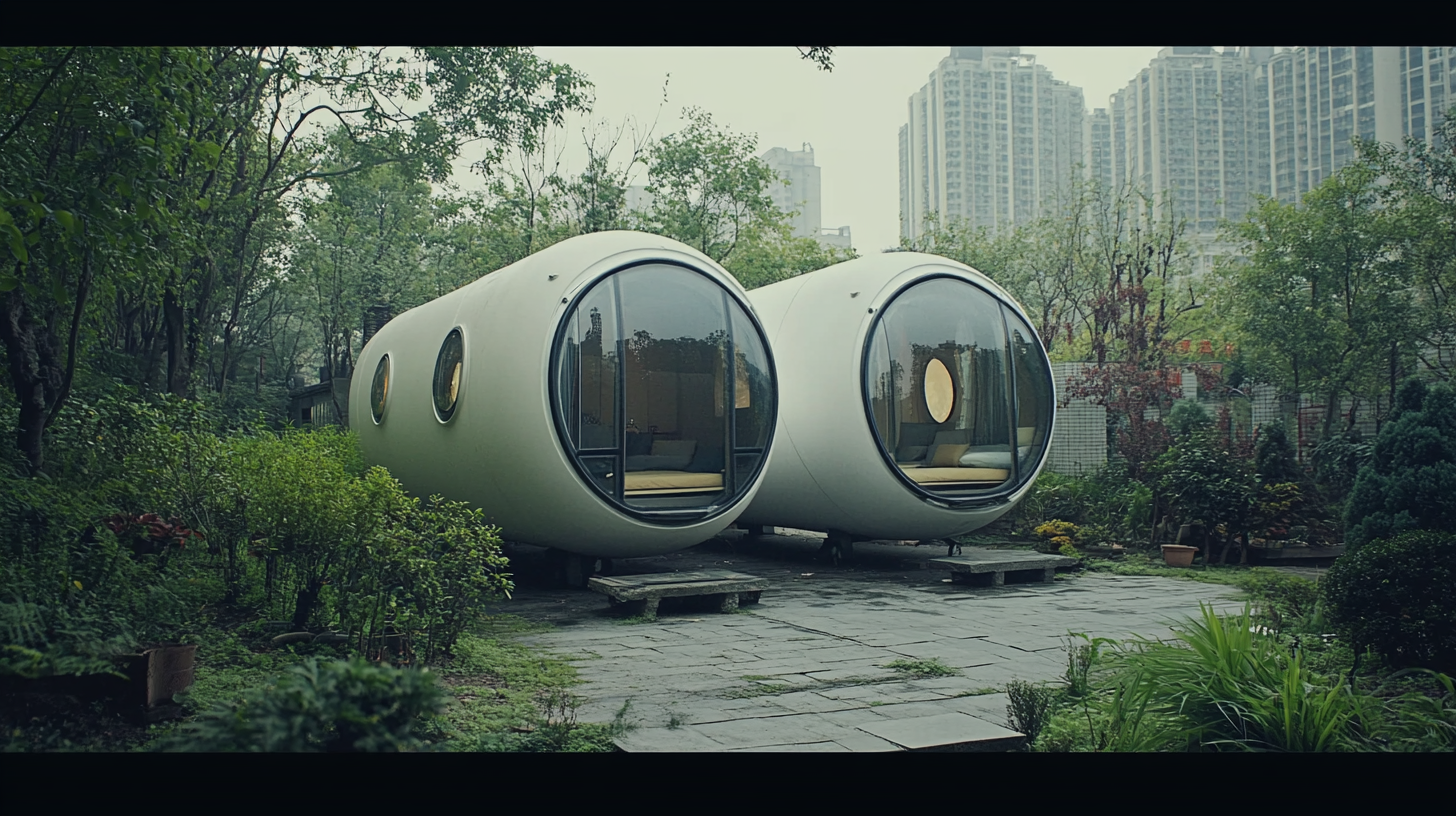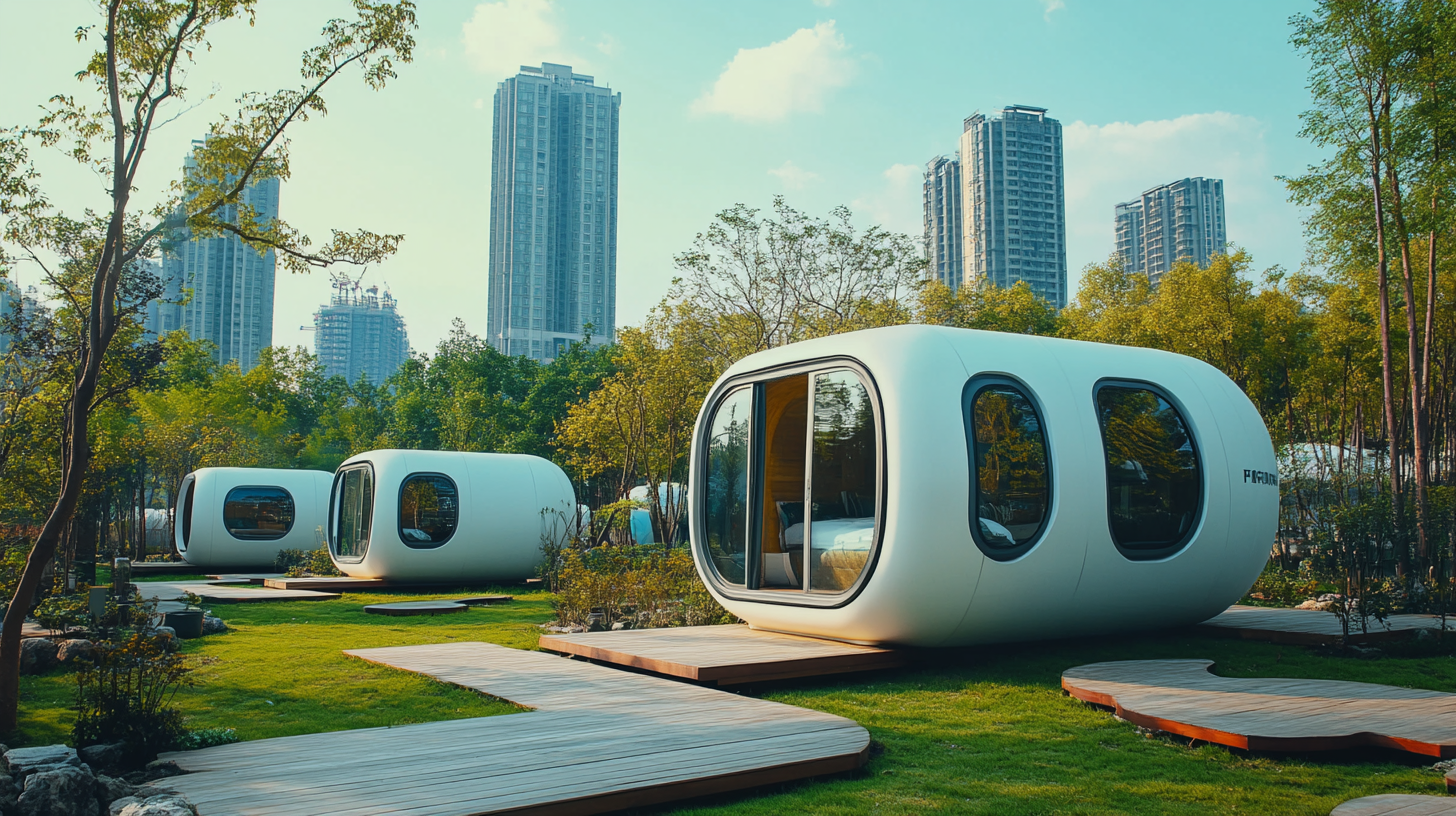
News
Exploring Sustainable Living: Innovative Capsule Homes in China as a Cost-Effective Housing Solution
In recent years, the concept of sustainable living has gained unprecedented traction, particularly in the housing sector where innovative solutions are urgently needed to address urbanization challenges. With over 1 billion people projected to reside in China's cities by 2030, the demand for affordable and efficient housing has never been greater. One promising solution that has emerged is "Capsule Homes China," which are compact, modular living spaces designed to maximize functionality while minimizing environmental impact. According to a report by the Global Housing Forecast, capsule homes can reduce construction costs by up to 40% compared to traditional housing models, making them an appealing option for both investors and urban planners. Furthermore, these homes are often constructed from sustainable materials and designed to be energy-efficient, perfectly aligning with the global push toward eco-friendly living. As more individuals seek to downsize and embrace minimalism, capsule homes represent a revolutionary step forward in the quest for sustainable and affordable living solutions in the heart of urban China.

The Rise of Capsule Homes: A Sustainable Housing Trend in China
In recent years, capsule homes have emerged as a revolutionary solution to the housing crisis in China, reflecting a broader trend towards sustainable living. These compact, efficient living spaces are designed to maximize functionality while minimizing environmental impact. With urban populations swelling and traditional housing options becoming prohibitively expensive, capsule homes provide an innovative alternative that caters to both budget-conscious individuals and environmental enthusiasts alike.
The popularity of these tiny dwellings is particularly pronounced in densely populated cities, where space is limited and property prices are skyrocketing. Many entrepreneurs and developers have embraced the concept, creating stylish and practical capsule homes that offer residents a unique living experience without compromising on comfort. As the trend gains momentum, it's evident that capsule homes not only address the issue of affordable housing but also promote a minimalist lifestyle that aligns with sustainable practices. This evolving housing trend represents a significant step towards rethinking urban living and the future of home design in China.
Design Innovations in Capsule Homes for Eco-Friendly Living
In recent years, capsule homes have emerged as a pioneering solution for sustainable living in China. These compact dwellings, often no larger than 25 square meters, are designed to maximize efficiency and minimize environmental impact. According to a report by the International Energy Agency, buildings account for nearly 40% of global energy consumption, highlighting the necessity for more sustainable living options. Capsule homes utilize innovative design features such as energy-efficient insulation, solar panels, and rainwater harvesting systems, significantly reducing energy demands and resource use.
The integration of smart home technology further enhances the eco-friendliness of capsule homes. A study published in the Journal of Sustainable Architecture and Urban Development noted that the adoption of smart appliances and energy management systems can reduce household energy consumption by up to 30%. As urban populations grow and land becomes scarcer, these innovative designs not only provide a cost-effective housing solution but also promote a lower carbon footprint, proving essential in the face of escalating climate challenges. Through the lens of these design innovations, capsule homes represent a significant step toward achieving sustainable living in densely populated areas.
Exploring Sustainable Living: Innovative Capsule Homes in China
This bar chart illustrates the performance metrics of innovative capsule homes in China as a cost-effective housing solution. The metrics evaluated include Cost, Energy Efficiency, Space Utilization, Eco-Friendliness, and Social Impact. Each metric is rated out of 100, showing a strong performance in sustainable living aspects.
Cost-Effectiveness of Capsule Homes Compared to Traditional Housing
The rise of capsule homes in China presents a compelling solution to the growing housing affordability crisis. Traditional homes often require significant investments, with the average price per square meter in major cities like Beijing and Shanghai exceeding $5,000. In contrast, capsule homes can be built at a cost of approximately $1,000 to $2,000 per unit, offering a stark financial advantage. According to a report by the China Society of Urban Studies, housing costs account for over 40% of urban households' income, underlining the urgent need for more budget-friendly options.
Innovative designs and efficient use of space make capsule homes not only cost-effective but also environmentally sustainable. A study from the Institute of Building Environment and Energy Efficiency indicates that modular construction methods utilized in capsule homes can reduce construction time by 50% and waste by as much as 60%. This efficiency translates into lower energy consumption and a smaller carbon footprint, appealing to a generation increasingly concerned about environmental sustainability. By providing quality living spaces at a fraction of traditional housing costs, capsule homes are poised to redefine urban living in an economically viable and ecologically responsible manner.
Cost-Effectiveness of Capsule Homes Compared to Traditional Housing
This pie chart illustrates the cost distribution between capsule homes and traditional homes. As shown, capsule homes account for a smaller percentage of overall housing costs, highlighting their cost-effectiveness as a sustainable living solution in China.
Community Living and Social Impact of Capsule Home Developments
The rise of capsule homes in China has transformed not just individual living spaces but also the dynamics of community living. These innovative micro-houses, designed to maximize space and minimize costs, promote a lifestyle that encourages social interactions among residents. By clustering these homes within a community-oriented framework, developers create shared spaces such as gardens, kitchens, and lounges, fostering a sense of belonging and collaboration among neighbors.
Additionally, the social impact of capsule home developments extends beyond mere housing solutions. These projects often attract a diverse demographic, including young professionals, students, and low-income families, bridging gaps between different social groups. The communal aspect of capsule living cultivates an environment where residents can support each other through shared resources and social events, ultimately leading to a stronger, more interconnected community. As these capsule homes become more prevalent, they hold the potential to redefine not just how we live, but how we thrive together in urban settings.

Challenges and Future Prospects for Sustainable Capsule Housing in China
The concept of sustainable capsule housing in China presents both remarkable opportunities and significant challenges. As urbanization continues to surge, with projections indicating that by 2030, approximately 70% of China's population will reside in cities, the pressing demand for affordable housing is stark. Capsule homes, often leveraging advanced building technologies and eco-friendly materials, offer a potential remedy, promoting efficiency and reduced environmental impact. According to a report by the World Bank, urban housing demand in China is forecasted to reach over 20 million units annually by 2025, underscoring the importance of innovative housing solutions.
However, the path toward widespread adoption of capsule homes is not without obstacles. Regulatory hurdles and zoning restrictions can impede the construction of these compact dwellings, which often challenge conventional building norms. Additionally, consumer perception plays a key role; many prospective homeowners remain skeptical about the livability and longevity of such homes. A survey from the China National Real Estate Development Group indicated that only 30% of respondents deemed capsule homes to be a viable option for long-term living, indicating the need for educational initiatives to shift public opinion.
Looking ahead, the integration of smart technologies in capsule homes could address some of these concerns, enhancing convenience and energy efficiency. As the market matures and success stories emerge, it is likely that a growing number of stakeholders—including developers, investors, and governmental bodies—will recognize the potential of capsule housing not just as a solution to urban housing shortages, but as a sustainable living alternative suitable for the future.

